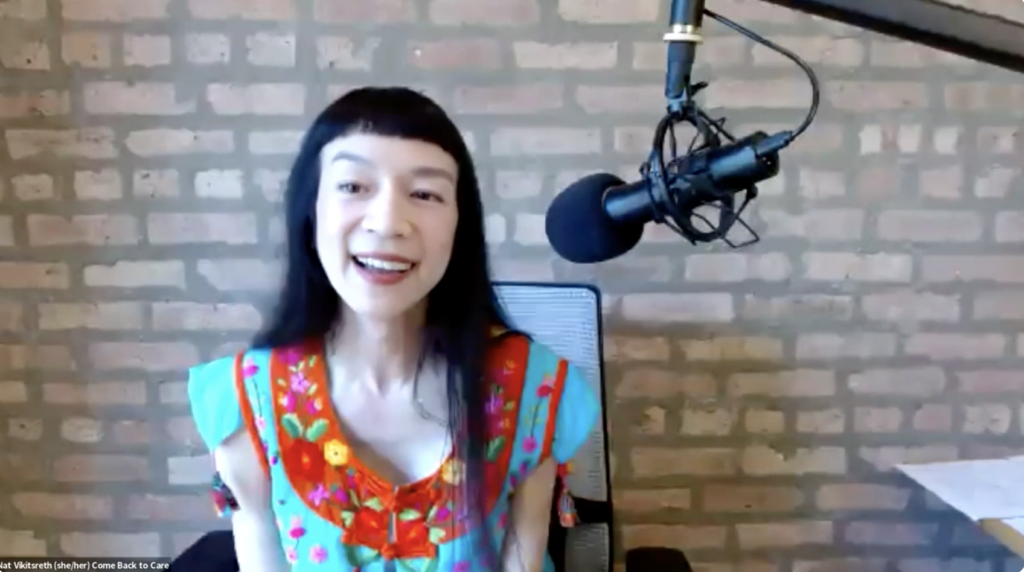Home > How Early Childhood Providers Can Use Reflective Supervision to Strengthen Their Practice [Webinar]
Have you ever talked to someone about something that weighed heavy on your mind, and immediately felt lighter afterward?
In that moment, you felt seen and reassured. Maybe you didn’t get a solution to your problem, but that person helped you feel better by simply being in that space with you. This “quality of being with” is the essence of reflective supervision according to Nat Vikitsreth, LCSW, DT, CEIM.
Nat recently facilitated a webinar titled “The heART of Reflective Supervision: Attunement, Reflection, and Togetherness” with the South Southwest Mental Health Technology Transfer Center Network (MHTTC) and the Texas Institute for Excellence in Mental Health.
In this post, we’ll cover key insights from the session to help early childhood providers, specifically newcomers or those with up to three years of experience, understand the impact of reflective supervision.
According to the Health Federation of Philadelphia, reflective supervision is the regular collaborative reflection between a service provider and supervisor that builds on the supervisee’s use of their thoughts, feelings, and values within a service encounter. Reflective supervision complements the goals and practices of trauma-informed systems.
In reflective supervision, the relationship between supervisor and supervisee models the desired relationships between provider and client in a therapeutic/helping relationship. This relationship is based on collaboration, choice, trust, and control.

Nat Vikitsreth (she/her) works as a nationally award-winning decolonized therapist and facilitator, a trans rights activist, and host of the Come Back to Care Podcast. She founded Come Back to Care, an organization that focuses on anti-racist, conscious, and holistic parenting for anyone who loves and raises children.
Nat explains reflective supervision as the “quality of being with” where we witness and delight in someone's discovery of their groove, gifts, and growth.
Here’s an example:
Let’s say your home visitor got flustered in a session. They witnessed a toddler trying to play with their father, but instead of connecting with the child, he handed them an iPad to watch cartoons. The home visitor asked the father why he didn’t spend more time connecting with his toddler, which caused him to go quiet and shut down.
So, you ask questions like “What shaped your frustration there?” to explore their response without judgment. They explain that they’ve learned a lot about social-emotional development and the importance of being play-based and not relying on devices. In this situation, there’s tension between your home visitor’s beliefs and the father’s actions.
To help the home visitor empathize with the dad, you ask: “What do you think shaped dad’s decision to give the toddler an iPad?” By asking more questions and staying in this pattern of curiosity, you discover that your home visitor has had other moments in the past where they got triggered and entered a “teaching mode.”
You work through this together and ask them to think of moments where they got triggered but didn’t enter that reactive mode. Can they practice that regulation in moments with the father? You’re helping the home visitor understand how to apply their existing strengths to those moments with families. They already have what it takes to tackle this area of growth.
How many of you have been made to feel erased, silent, or small because of things like your skin color, immigration status, race, or gender? To some degree, we all carry this would of being erased. Here are a few actions Nat recommends to support your supervisee and help them feel seen.
Nat asks everyone to shift away from their fear of saying the wrong thing. Instead, communicate to the person in front of you that, “I have the capacity to hold hurt and harm when they occur.” You’re letting them know that they can trust you enough to share nuances of their processing and their stories.
You’re creating a contract together and building a container where they can talk about their race, gender, and other aspects of their identity. Since you have more power in this relationship as the supervisor, you have the responsibility to set that container and be proactive about it.
If your supervisee shares something during a session that makes you want to teach or correct them, take a step back first. There’s a time and place for that guidance, but for now, try to stay anchored in your curiosity so you can meet your supervisee where they’re at before teaching.
Contextualize their behaviors in a political, historical, and cultural-social context. Nat shares an important phrase from one of her teachers: “What’s hysterical is historical.” This suggests that a person's reaction or feelings may be triggered by something from their past.
The South Southwest MHTTC and the Texas Institute for Excellence in Mental Health provide a wide range of trainings, research, and other resources for providers.
Check out the products and resources catalog, and subscribe to our newsletter to hear about new materials!